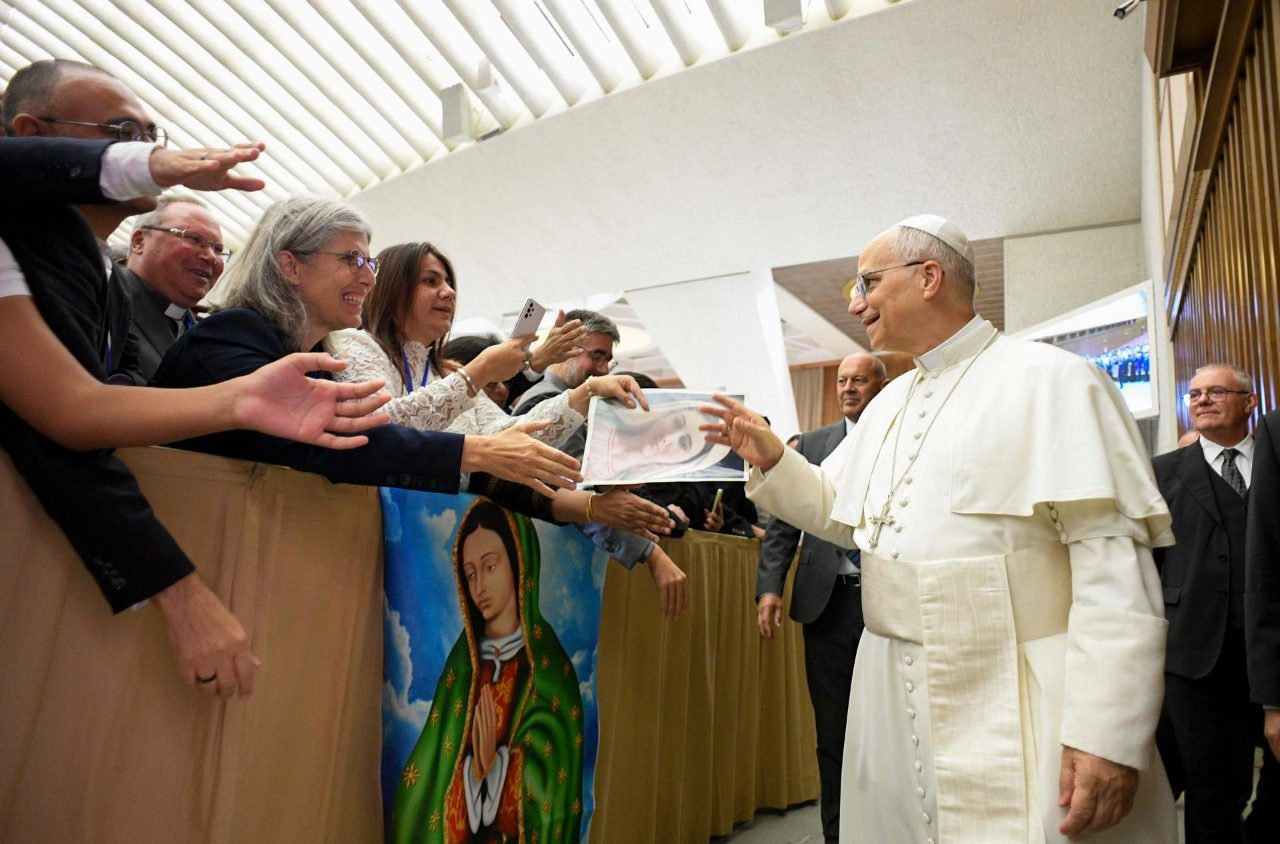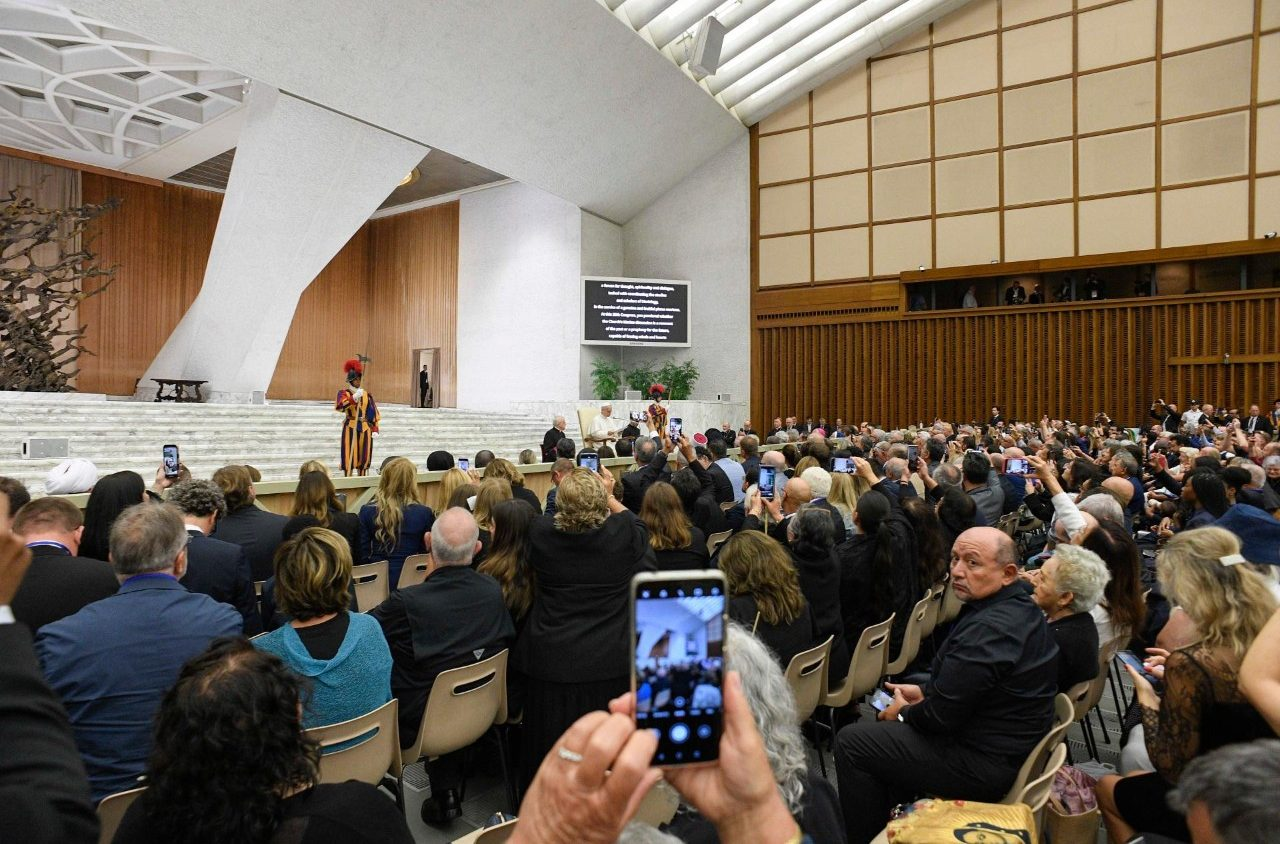Vatican City: Pope Leo XIV brought the 26th International Mariological Marian Congress to a solemn close with a powerful address in the Paul VI Audience Hall, urging the faithful to contemplate the world through the eyes of the Virgin Mary. In his reflection, the Pope emphasized that Mary remains a living guide for humanity, continuing to open doors where they are closed, build bridges where division exists, and tear down walls that separate cultures and peoples. Her vision, he said, enables societies to live in harmony despite their profound diversity.
Speaking before scholars, theologians, and members of the clergy, Pope Leo underlined how Mary’s gaze represents more than personal devotion it is a counterweight to the falsehoods of propaganda, the rigidity of ideology, and the dangers of toxic information. These forces, he explained, cannot provide the liberating word that is both “unarmed and disarming.” By looking at history and the mystery of God through Mary’s eyes, he said, believers are drawn instead to divine grace, which alone makes it possible for nations, cultures, and communities to journey together along the path of peace.

The Pope’s address drew together the central themes and insights of the Congress, which was organized by the Pontifical International Marian Academy and hosted at the Antonianum Auditorium in Rome from September 3rd to 6th. Over four days, nearly six hundred mariology scholars from around the world gathered to reflect on the chosen theme, “Jubilee and Synodality: A Church with a Marian Face and Practice.” Their discussions explored how the Church can embody a Marian spirit in both its theology and practice, particularly as it prepares for the upcoming Jubilee Year and continues along the synodal journey.
In his message, Pope Leo pointed out that the very title of the Congress highlights two deeply biblical categories: jubilee and synodality. These, he said, not only express the mission of the Mother of God but also mirror the vocation of the Church itself. In Mary’s life and witness, he explained, the Church finds its model of identity. “The Virgin Mary, Mother of the Church, teaches us how to be the holy people of God,” he declared, noting that the Pontifical Academy’s service is vital in reminding the Church that its face and its way of acting must always be Marian.

Expanding on this vision, the Pope described Mary as a “jubilee woman.” Her jubilee spirit, he explained, comes from her ability to always begin anew by listening to the Word of God. She receives the Word not with preconceived expectations, but with the openness to desire what God desires, echoing the attitude that St. Augustine praised in his Confessions. This, Pope Leo stressed, is the model for the Church today: never tiring in dialogue with God, and never being afraid to pose challenging questions, just as Mary did at the Annunciation when she asked, “How will this come about?”
At the same time, Mary is also, he said, a “synodal woman.” She is deeply and maternally involved in the work of the Holy Spirit, who calls together those once divided by mistrust, suspicion, or outright enmity. In this, Mary reveals herself as the perfect collaborator of the Spirit, tirelessly helping humanity overcome division by fostering reconciliation, mutual trust, and unity. In the Pope’s words, she is the one who continually “opens doors, builds bridges, tears down walls, and helps humanity live in peace and harmony amid diversity.”
From these twin attributes of jubilee and synodality, Pope Leo drew the image of a Church with a Marian face and heart. Such a Church, he said, is one that lives in balance and integration where reason and emotion, body and soul, the universal and the local, and the individual and the community are held together in harmony. In this Marian vision, faith does not remain abstract but takes flesh in concrete realities, particularly in the Church’s charitable mission to the poor, the marginalized, and all those who live on the peripheries of society.
Before concluding, the Pope highlighted that Marian devotion is not limited to private prayer or sentiment but has profound cultural and social dimensions. Presenting the image of Mary as a model of listening, dialogue, and openness, he noted, offers a way forward for different peoples and traditions to meet each other in understanding. Mary, he stressed, becomes not only the mother of the Church but also a path of encounter among cultures.
The Holy Father concluded the session by thanking the Pontifical International Marian Academy for its service to the Church and for presenting the figure of Mary as a source of unity in a fractured world. He then invited the assembly to join him in praying the Ave Maria, marking the end of the Congress with the simplicity of Marian devotion and the shared hope that, through Mary’s gaze, humanity might continue to walk together in peace.